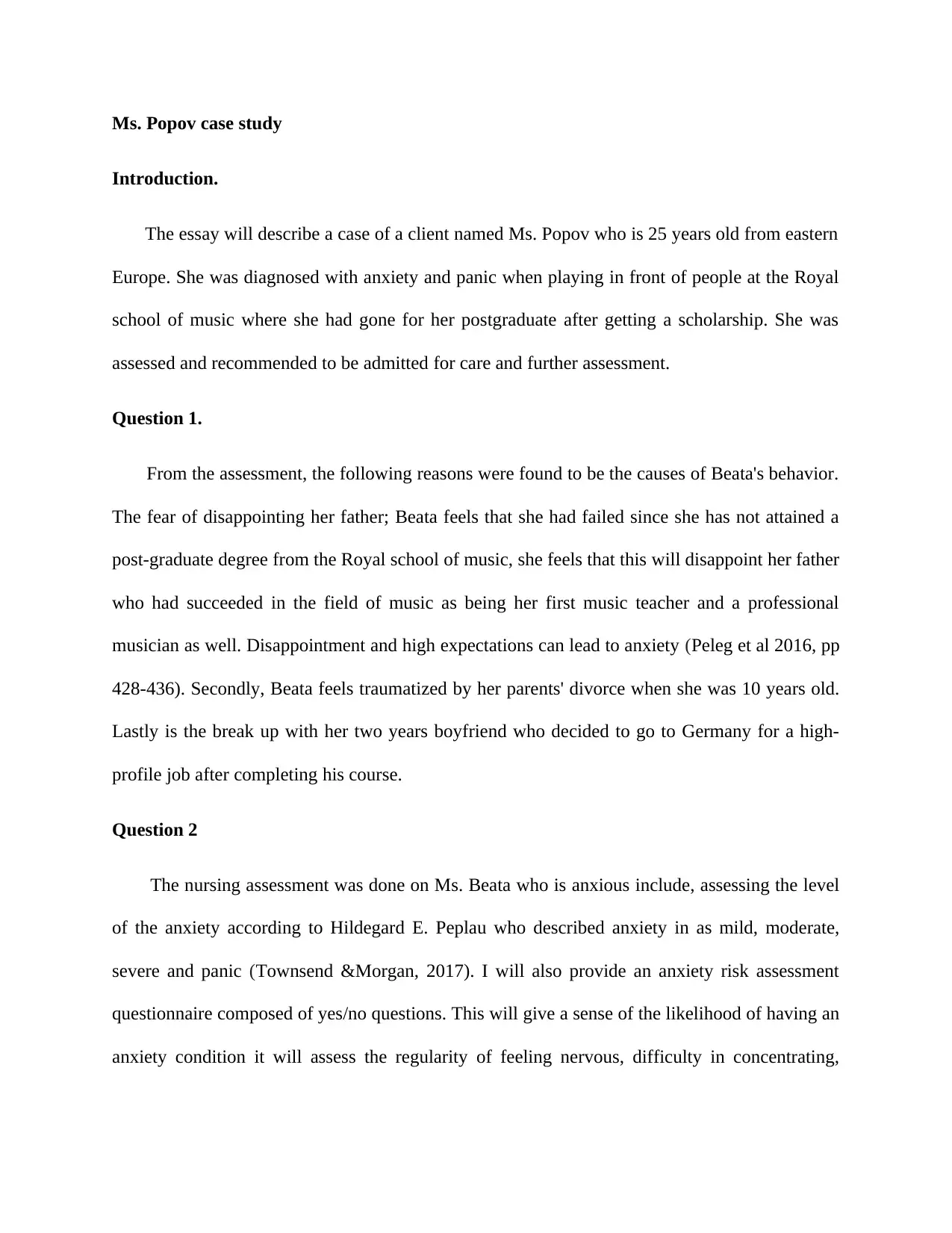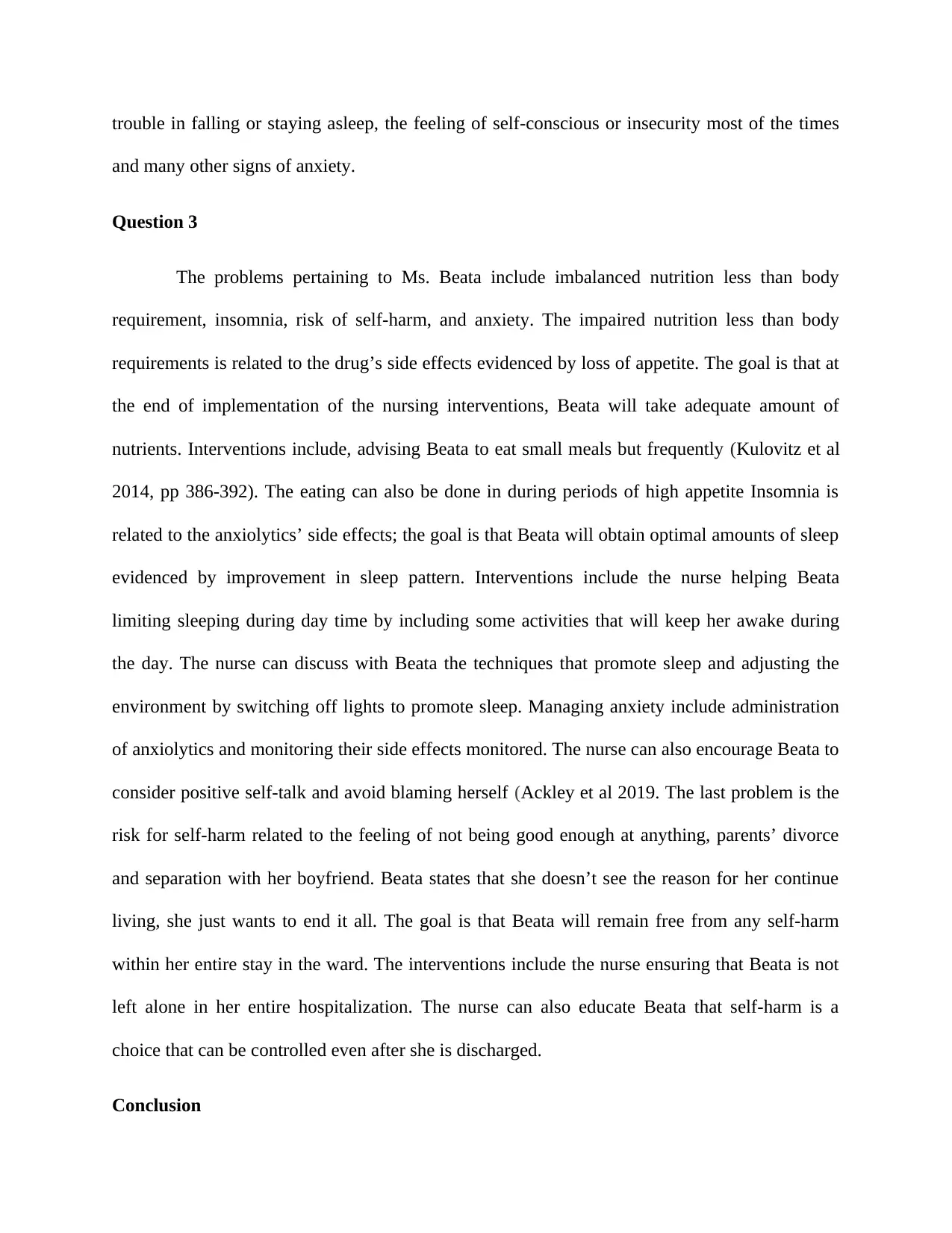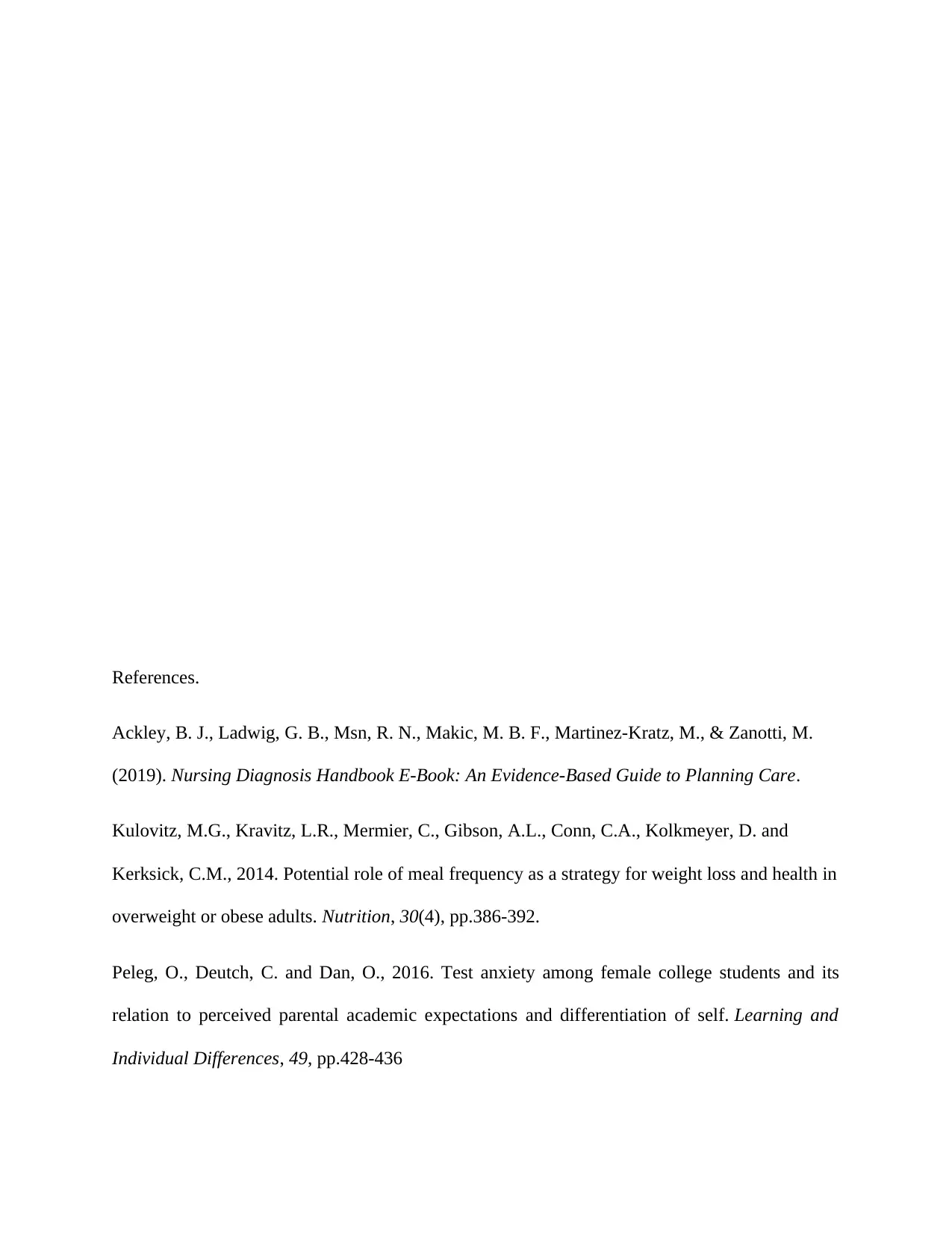Nursing Case Study: Assessment and Care Plan for Ms. Popov's Anxiety
VerifiedAdded on 2023/01/19
|7
|845
|85
Case Study
AI Summary
This case study presents a nursing care plan for Ms. Popov, a 25-year-old client diagnosed with anxiety and panic disorder. The assessment identifies the causes of her anxiety, including fear of disappointing her father, trauma from her parents' divorce, and a recent breakup. The nursing assessment utilizes Hildegard E. Peplau's anxiety levels and includes a risk assessment questionnaire. Identified problems include imbalanced nutrition, insomnia, risk of self-harm, and anxiety. The care plan outlines interventions such as encouraging small, frequent meals; promoting sleep hygiene; administering anxiolytics; and preventing self-harm through constant monitoring and education. The goal is to improve Ms. Popov's overall well-being and manage her symptoms effectively. The case study also includes references to support the interventions.
1 out of 7












![[object Object]](/_next/static/media/star-bottom.7253800d.svg)